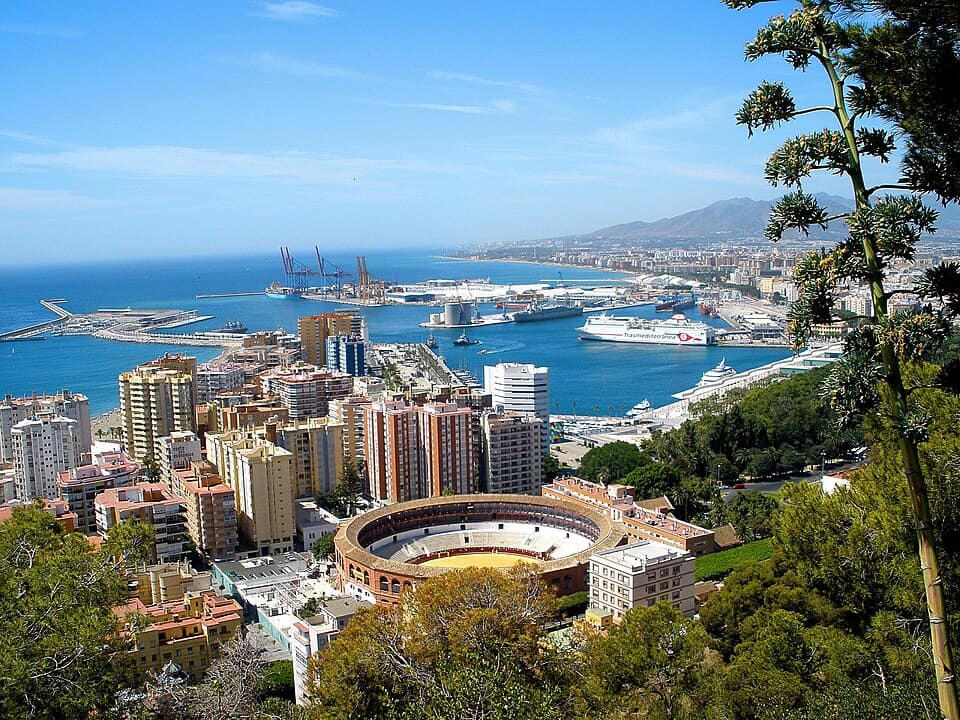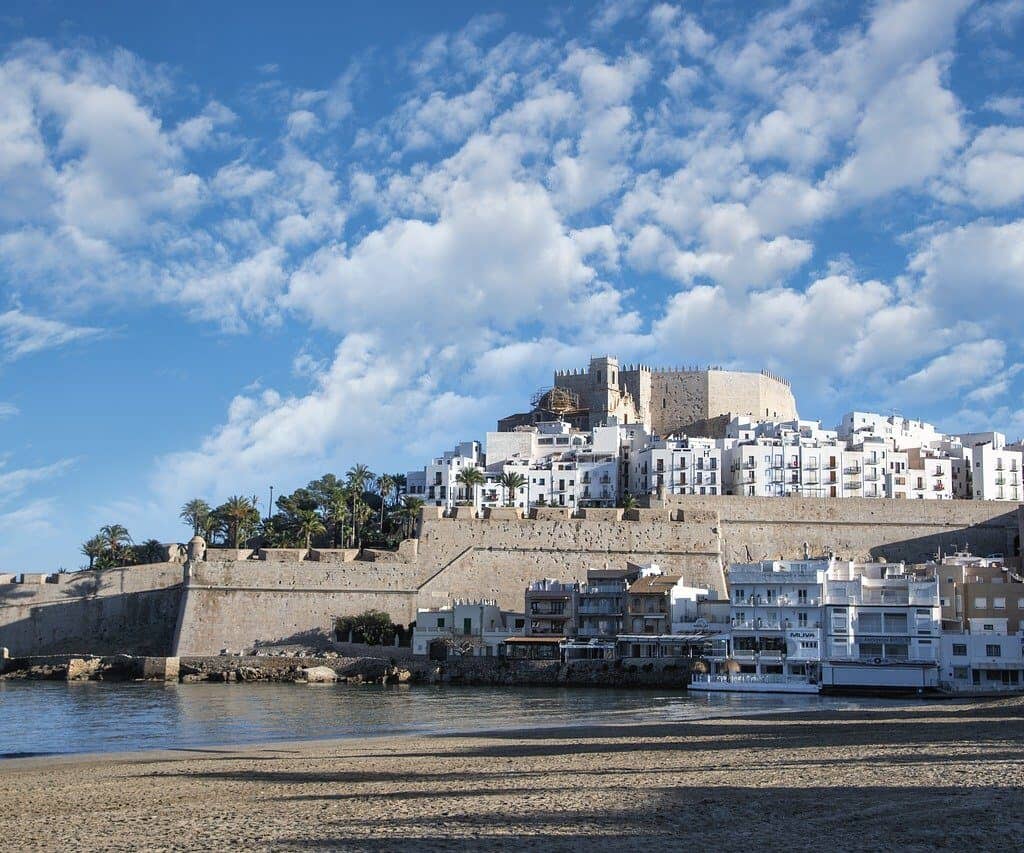
Worthwhile Journeys
You are going to be spending some time in the ports you embark and disembark from. These aren’t just logistical points; they’re opportunities for further enrichment. Take an extra day to discover what’s beyond the harbour. It’s not merely about filling time; it’s about making the entire journey worthwhile.
What to Do in Malaga
History
You can’t set foot in Malaga without feeling the weight of its history. The Alcazaba, a fortress built by the Moors in the 11th century, offers panoramic views and an unforgettable glimpse into the past. The nearby Roman theatre, still in use after two millennia, adds another layer to this historical tapestry.
Culture
In terms of culture, Malaga is Picasso’s birthplace, and it honours the artist with an excellent museum in the city centre. When you’re there, you might also stumble upon spontaneous Flamenco performances in hidden squares. The Holy Week celebrations are a spectacle of pageantry you won’t want to miss if you’re around in spring.
Sites of Interest to a Sailor
The headlands surrounding Malaga offer fantastic opportunities for spotting marine life, from dolphins to the occasional whale. The Cape of Gata, a sailor’s day-trip dream, has some of the most incredible geology and clear waters on this side of the Mediterranean. Faro de Calaburras is one of those lighthouses you want to see up close, standing defiantly against the elements.
Entertainment
Nightlife in Malaga varies from traditional tapas bars where locals and tourists alike revel in culinary delights, to modern rooftop lounges offering cocktails and sweeping views of the city. Live music is common, ranging from jazz to more traditional Spanish guitar.
Eating Out
For those looking to dine, be sure to try the region’s specialities like ‘espetos,’ sardines skewered and grilled on an open flame at the beach. Fresh seafood is the norm here, and the local wines pair beautifully with the flavours of the sea.
Nature
Nature lovers will appreciate the nearby Montes de Malaga Natural Park, featuring pine forests, hiking trails, and even the occasional waterfall. The beaches are not to be ignored either; they are well-kept and offer various water-based activities like paddle boarding and kayaking.
Unique Features
What sets Malaga apart is its blend of the old and the new. You can go from exploring ancient ruins to taking in some avant-garde art, all within a day. It’s a port city that offers a bit of everything, with an Andalusian soul that’s hard to resist.
Accommodation
Some well-known spots for accommodation include the Gran Hotel Miramar for a more luxurious stay and the Room Mate Valeria, known for its Andalusian style and modern comforts.
Heading Official Tourist Website
For more detailed information, the official tourist website for Malaga is malagaturismo.com.
Weather Malaga
In Malaga, you can generally expect a Mediterranean climate. Summers are hot, with temperatures often reaching above 30°C, while winters are milder, rarely falling below 10°C. Spring and autumn offer the most pleasant conditions for exploring, with temperatures ranging from 18 to 25°C.
Sea and Beyond: A Responsible Mariner’s Guide
Since you’re already investing in a unique sailing adventure, why not extend that spirit to your travel choices? Opt for more sustainable methods of transport where possible like trains, coaches or sharing a car. If you fly, and we realise this may well be the case, you could research some ways to offset the carbon created by the flight.
Special Interests
If you have a special interest that you would like to find out about for this port or to tell us about, we would love to hear from you.
How to Get There
From the UK
Direct flights from major UK airports to Malaga are plentiful. Alternatively, a combination of train travel to southern France followed by a ferry can make for an adventurous journey.
From Europe
Trains connect Malaga with various European cities, including Barcelona and Madrid. Buses also provide cheaper but longer options.
From North America
Direct flights are limited, but one-stop options through Madrid or another European hub are commonly available.
From Australia
There are no direct flights from Australia to Malaga. One or two-stop flights via Asian or Middle Eastern cities are the quickest options.

The 700-year Moorish invasion had a profound effect on the shaping of Spain, and nowhere more so than on the Mediterranean coast. Castellón is both a province and a city port situated 100km North of Valencia. It is on the same latitude as Mallorca. If you go a little way inland from the coastal resorts and up onto the mountain slopes you will see ancient Arab methods of irrigation still used in the fertile groves of orange, lemon, cherry and almond tree.you can smell the Valencia ‘orange blossom’
Certainly, let’s get into the nitty-gritty of what makes Castellón de la Plana a destination worth dropping anchor for.
How to Get There
If you’re hailing from the UK, Europe, North America, or Australia, you’ve got a variety of travel options to reach Castellón de la Plana.
By Plane: Castellón-Costa Azahar Airport is your nearest landing spot, well-linked to major European cities. A quick taxi ride will land you in the city centre.
By Train: The city is well-served by Spain’s extensive rail network, making it a convenient option for travellers from within Spain or neighbouring European countries.
By Ferry: The closest port for international ferries is in Valencia, roughly an hour’s drive away.
By Coach or Bus: Various coach services offer long-distance routes to Castellón de la Plana from different parts of Europe. Once you’re in the city, local buses are a handy way to get around.
What to Do in Castellón de la Plana
History: The city is a living museum with landmarks like the El Fadrí bell tower and the Co-cathedral of Saint Mary. For art and history buffs, the Museum of Fine Arts is a must-see.
Culture: The city is a vibrant centre of Valencian culture. Keep an eye out for traditional festivals like the Magdalena Festivities, which offer a rich tapestry of local arts and traditions.
Sites of Interest to a Sailor: The coastline here is a feast for the eyes. Serradal Beach is perfect for a leisurely walk, and the surrounding area offers intriguing headlands and bays.
Entertainment: When the sun sets, the city comes alive with a range of bars, clubs, and live music venues. Whether it’s traditional flamenco or modern beats, Castellón de la Plana has something for everyone.
Eating Out: The city’s culinary landscape is as diverse as its culture. From traditional Valencian paella to avant-garde fusion dishes, your taste buds are in for a treat. The Mercado Central is a haven for food lovers, offering fresh produce and local treats.
Nature: If you’re looking to swap sea legs for hiking boots, the Desierto de las Palmas Natural Park is your go-to. For those willing to venture a bit further, the Columbretes Islands offer diving and snorkelling opportunities.
Unique Features: What sets Castellón de la Plana apart is its harmonious blend of history, natural beauty, and a bustling cultural scene. It’s a place where you can enjoy a rich historical tour in the morning, a nature hike in the afternoon, and a lively night out, all without skipping a beat.
